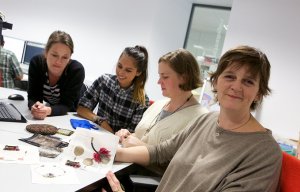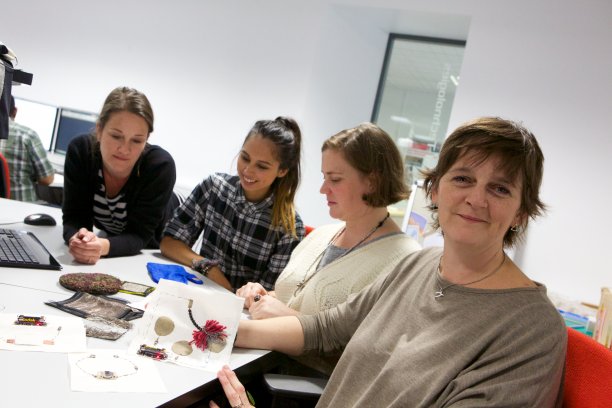
Smart textiles project helps improve anxiety in mental health patients
Dr. Sarah Kettley has been running workshops with people with mental health issues to explore how e-textiles can be used to help support them.

30th November 2015
Innovation in Textiles
|
Nottingham, UK
Dr. Sarah Kettley, who is a researcher of smart textiles at the School of Architecture, Design and the Built Environment, Nottingham Trent University, has been running workshops with people with mental health issues to explore how e-textiles can be used to help support them and ensure that they do not continue to be ‘designed out’ of society. We put some questions to Dr. Kettley about her work.
Dr. Kettley: e-textiles are a potentially powerful platform for the Internet of Things – technical textiles already exist at all physical scales of the built environment, whether we realise it or not – from medical implants to geo-textiles and building structures. They are now tipped as being the future of wearable computing, as manufacturing systems evolve to catch up with designers’ visions, and markets become more familiar with the idea of wearable technology.
We have found that many people with mental health conditions do not use the smart phones and tablets most developers are designing for. An Internet of Things enabled by e-textiles can be designed to respond to a wider range of our senses and different types of touch input, depending on people’s needs.
Perhaps more importantly, this technically seamless vision for the Internet of Things poses issues for people with mental health conditions: ambient, ‘smart’ systems are designed to learn and respond to us without our explicit consent or understanding, but for some people this feels unsafe, and is experienced as a further removal of personal power.
We are trying to design with e-textiles so that the resulting ubiquitous networks of things feel accessible to people who might otherwise experience them as harmful.
Dr. Kettley: We have run co-design workshops with members of Nottinghamshire Mind Network, and participants’ feedback has focused on their experiences making handheld etextile objects. The personal nature of the designs, and the engaging, convivial nature of making are benefits in themselves. Participants report lowered anxiety levels, feelings of safety and acceptance, and pride in what they had been able to make.
The objects themselves currently include simple switch circuits with LED output. Participants own the work they have done; their designs remind them of the good place they were in when they made them, and of the positive relationships they formed during that time. Making seems to contribute to the mental health benefits of e-textiles. This presents an opportunity to explore new markets for personalised input and output devices connected to an Internet of Things.
The project is now running another series of workshops in which the handheld objects are networked with domestic scale textiles, such as furnishing. Using these dynamic networks of e-textiles, the participants are devising the services and flows of information that will benefit them in everyday life. The scenario our participants have decided to focus on is transport. For many, using public transport is fraught with anxiety, and mobile e-textiles can act simply as ‘touchstones’, lowering stress levels, and connecting individuals to a safe place like Mind.
Dr. Kettley: The research involves members of Nottinghamshire Mind Network in the East Midlands in the UK, and runs for 18 months until February 2016.
It involves three series of participatory design workshops covering:
Dr. Kettley: Individuals who access Mind services are on a tiered membership, which reflects where they are on their mental health ‘journey’. Mind sees potential for the e-textiles to support people in their mental health recovery (or management), by sharing new data on both stressors and experiences of coping well.
Dr. Kettley: This is a form of Inclusive Design. It highlights potential ethical and experiential issues for everyone in an Internet of Things; if we can design well with and for people with mental health issues, we believe we are better equipped to design well for all of us.
Further information

Business intelligence for the fibre, textiles and apparel industries: technologies, innovations, markets, investments, trade policy, sourcing, strategy...
Find out more